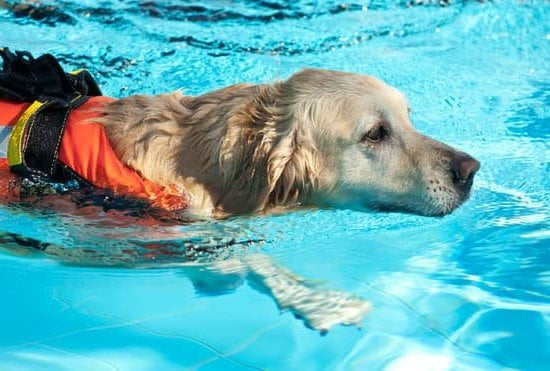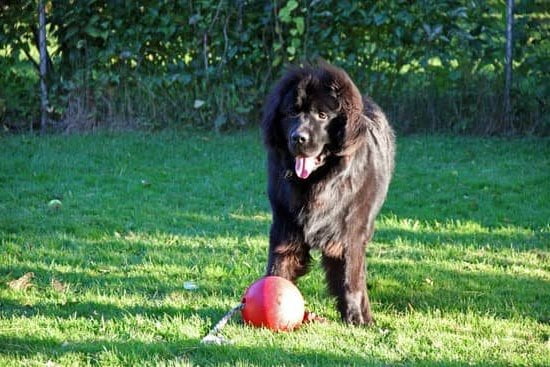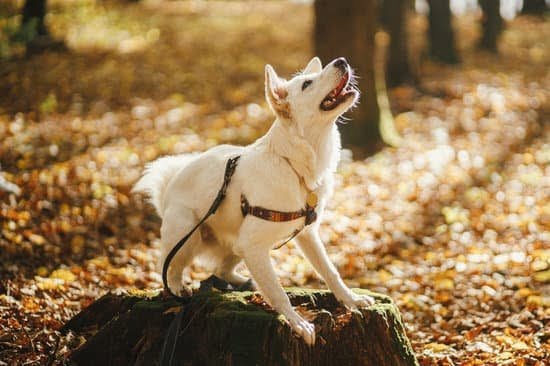Are you concerned about bed bugs invading your home or business? These pesky insects can be difficult to detect, making it challenging to effectively address an infestation. However, with the help of a specially trained dog, bed bug detection can become much more effective. In this article, we will explore the process of training a dog to find bed bugs and the key factors involved in this specialized skill.
Bed bug detection by dogs has become a popular and highly effective method for identifying these elusive pests. Using their keen sense of smell, dogs are able to locate bed bugs in various environments, including homes, hotels, and commercial buildings. In this article, we will delve into the intricacies of training a dog for this important task and the steps involved in preparing them for successful bed bug detection.
Understanding the sense of smell in dogs is crucial to comprehending their ability to locate bed bugs. We will explore how dogs’ olfactory senses work and why they are uniquely qualified for detecting even minuscule traces of bed bugs.
Additionally, we will discuss the importance of selecting the right dog breed for bed bug detection and how certain breeds are better suited for this type of work. Join us as we unravel the fascinating world of training dogs to find bed bugs and the integral role they play in pest control efforts.
Understanding the Sense of Smell in Dogs
Dogs have an incredible sense of smell, which is why they are often used for various detection purposes, including finding bed bugs. A dog’s sense of smell is estimated to be 10,000 to 100,000 times more acute than humans, making them invaluable in identifying the presence of bed bugs even in the smallest crevices and cracks.
This section will delve into the fascinating world of a dog’s olfactory abilities and how it relates to their training for bed bug detection.
The olfactory system of a dog is truly remarkable, with an estimated 300 million scent receptors compared to just 5-6 million in humans. These receptors allow dogs to detect minuscule amounts of odor and differentiate between different scents with astounding accuracy. When training a dog to find bed bugs, it’s important to understand that their sense of smell is their primary way of experiencing the world around them.
In order to train a dog to find bed bugs, it is crucial to understand how their sense of smell works. Dogs inhale air through their nostrils and then exhale it out through slits on the side of their nose.
This process allows them to sample scents separately for each nostril, giving them the ability to pinpoint the source of a particular odor. By understanding this process, trainers can effectively harness a dog’s natural abilities for bed bug detection training.
Selecting the Right Dog Breed for Bed Bug Detection
Bed bug detection by dogs is an effective and non-invasive method of finding these pesky insects in homes, hotels, and other locations. One of the key factors in successfully training a dog for this task is selecting the right breed for bed bug detection. Not all dog breeds possess the necessary qualities to excel in this type of work. Here are some factors to consider when selecting the right dog breed for bed bug detection:
- High Prey Drive: Dogs with a high prey drive, such as Beagles, are often used for bed bug detection because they have a natural instinct to hunt and search for small creatures.
- Strong Sense of Smell: Breeds with a superior sense of smell, like German Shepherds or Labrador Retrievers, are well-suited for bed bug detection work due to their ability to pick up scents from a distance.
- Energy Level: It’s important to select a breed that has the energy and stamina required for thorough searches and long hours of training and work.
Once you have selected the right dog breed for bed bug detection, it’s essential to understand that successful training will depend on how well you harness your dog’s sense of smell.
When considering how to train a dog to find bed bugs, it’s vital to remember that each dog is an individual. While certain breeds may be better suited for this task, any dog can be trained through patience and persistence. With consistent practice using positive reinforcement techniques, your chosen breed can become an excellent bed bug detection dog.
Basic Training for Bed Bug Detection
In the field of pest control, bed bug detection by dogs has become an increasingly popular and effective method. Dogs have an incredible sense of smell, making them excellent candidates for detecting the presence of bed bugs in homes, hotels, and other locations. Basic training for bed bug detection involves teaching the dog to recognize the scent of bed bugs and alert their handler to their presence.
The first step in training a dog to find bed bugs is to introduce them to the scent. This can be done by using actual bed bugs or specially designed scents that mimic their odor. The dog is then encouraged to sniff out the scent and associate it with a reward, such as a treat or toy. Through repetition and positive reinforcement, the dog learns to recognize and indicate the presence of bed bugs.
A crucial aspect of basic training for bed bug detection is teaching the dog to properly alert its handler when it detects the scent of bed bugs. Common alert behaviors include sitting, staring, barking, or pawing at the location where the scent is coming from.
It is important for handlers to understand these alert cues in order to effectively respond when working with their detection dog in real-life scenarios. By establishing a strong foundation in basic training, dogs can become reliable assets in identifying and controlling bed bug infestations.
Advanced Training Techniques for Bed Bug Detection
Now that you have mastered the basic training techniques for bed bug detection, it’s time to delve into more advanced methods to enhance your dog’s ability to find bed bugs. These advanced training techniques will help sharpen your dog’s skills and make them more effective in identifying the presence of bed bugs in various environments.
Here are some advanced training techniques for bed bug detection:
- Scent Discrimination: Teach your dog to identify the specific scent of bed bugs among other distractions. This can be done by introducing different scents and teaching your dog to only respond when they detect the scent of bed bugs.
- Variable Scenarios: Practice bed bug detection in different settings such as homes, hotels, offices, and other public spaces. This will expose your dog to various environments and improve their ability to locate bed bugs in real-life situations.
- Concealed Detection: Train your dog to detect bed bugs even when they are hidden or concealed in furniture, cracks, or walls. This will require more intensive training and precision to ensure that your dog can accurately pinpoint the location of the infestation.
These advanced techniques require patience, consistency, and dedication, but they can greatly improve the accuracy and reliability of your dog’s bed bug detection abilities. With continued practice and reinforcement, your dog will become a highly skilled bed bug detection specialist.
Remember that every dog is unique, so it’s important to tailor the training techniques based on your dog’s individual strengths and weaknesses. Consistent practice and positive reinforcement will ultimately lead to a well-trained bed bug detection dog that can effectively identify and alert you to the presence of these unwanted pests.
Using Positive Reinforcement in Dog Training
The Power of Positive Reinforcement
Using positive reinforcement in dog training is a powerful and effective way to teach dogs to find bed bugs. Positive reinforcement involves rewarding your dog with treats, praise, or play when they exhibit the desired behavior. When it comes to bed bug detection, positive reinforcement can help motivate and encourage your dog to consistently search for and alert you to the presence of bed bugs.
Training Techniques
When training a dog to find bed bugs, it’s important to use positive reinforcement techniques such as clicker training. This involves using a clicker to mark the desired behavior, followed by a reward. By pairing the click with a reward, your dog learns that their actions result in something positive. This method can be highly effective in teaching your dog to accurately detect bed bugs through their sense of smell.
Consistency and Patience
Consistency and patience are key when using positive reinforcement in dog training. It’s important to be consistent with the rewards you give your dog for correctly detecting bed bugs. Additionally, patience is crucial during the training process, as learning new skills takes time. By consistently using positive reinforcement and showing patience, you can effectively train your dog to find bed bugs with accuracy and reliability.
By incorporating positive reinforcement into your dog’s training regimen, you can effectively teach them how to find bed bugs using their keen sense of smell. With consistency, patience, and the right techniques, you can develop a strong bond with your canine companion while successfully training them for bed bug detection.
Common Mistakes to Avoid in Bed Bug Detection Training
When it comes to training dogs to detect bed bugs, there are common mistakes that dog handlers should avoid in order to ensure successful training outcomes. These mistakes can hinder the dog’s ability to effectively find bed bugs and can result in unreliable detection. In this section, we will highlight some of the common mistakes to avoid in bed bug detection training.
Skipping Basic Training
One of the most common mistakes in bed bug detection training is skipping basic obedience and scent work training. It is important for dogs to have a strong foundation in basic obedience commands such as sit, stay, and come, as well as an understanding of scent discrimination before moving on to specific bed bug detection training. Without these foundational skills, dogs may struggle with the more advanced aspects of bed bug detection.
Inconsistent Training Methods
Consistency is key when training dogs to detect bed bugs. Using inconsistent or conflicting training methods can confuse the dog and impede their progress. It is essential for handlers to use uniform training techniques and cues throughout the entire process. Additionally, inconsistency in rewarding desired behavior can also hinder the dog’s learning progress.
Not Understanding Canine Behavior
Another common mistake in bed bug detection training is not understanding canine behavior and communication signals. Dogs communicate through body language and vocalizations, and it is important for handlers to be able to read and interpret these signals during training. Misinterpreting a dog’s behavior can lead to confusion during training sessions, so it is crucial for handlers to educate themselves on canine behavior.
By avoiding these common mistakes in bed bug detection training, handlers can set their dogs up for success in effectively finding bed bugs. Understanding the importance of basic training, consistency in methods, and canine behavior will ultimately lead to more reliable and accurate bed bug detection by trained dogs.
Real Life Applications of Bed Bug Detection Dogs
Bed bug detection dogs have become invaluable in the pest control industry, as they offer a reliable and efficient method for identifying bed bug infestations. These specially trained canines are able to locate bed bugs in various environments, including homes, hotels, and commercial buildings. The ability of these dogs to pinpoint the exact location of bed bugs makes them an indispensable tool for pest control professionals.
The demand for bed bug detection dogs has increased significantly in recent years, as the prevalence of bed bug infestations continues to rise. With their keen sense of smell and rigorous training, these dogs are able to detect even the smallest traces of bed bugs, making them a highly effective solution for early detection and eradication. This not only helps prevent the spread of bed bugs but also saves time and money for property owners.
In conclusion, training a dog to find bed bugs is a complex process that requires patience, dedication, and expertise. By understanding the sense of smell in dogs, selecting the right breed, and using positive reinforcement techniques, handlers can effectively train their canine companions for successful bed bug detection. With proper training and handling, bed bug detection dogs can play a crucial role in addressing the growing problem of bed bug infestations in various settings.
Frequently Asked Questions
What Kind of Dog Is Trained to Detect Bedbugs?
The kind of dog that is trained to detect bedbugs is typically a specially trained canine, such as a beagle or a Labrador retriever. These dogs have an incredibly keen sense of smell, which makes them ideal for this task.
How Accurate Are Trained Canines for Detecting Bed Bugs?
Trained canines are highly accurate when it comes to detecting bed bugs. Research has shown that these dogs can detect even a single live bug or egg with an impressive success rate, making them a valuable tool in the fight against bed bug infestations.
Do Dogs Keep Bed Bugs Away?
While dogs trained to detect bed bugs are incredibly helpful in identifying infestations, they do not actually keep bed bugs away. Their role is more about pinpointing the presence of the pests so that appropriate measures can be taken to eliminate them. Bed bug prevention typically involves regular inspections and proactive measures to minimize the risk of infestation.

Welcome to the blog! I am a professional dog trainer and have been working with dogs for many years. In this blog, I will be discussing various topics related to dog training, including tips, tricks, and advice. I hope you find this information helpful and informative. Thanks for reading!





